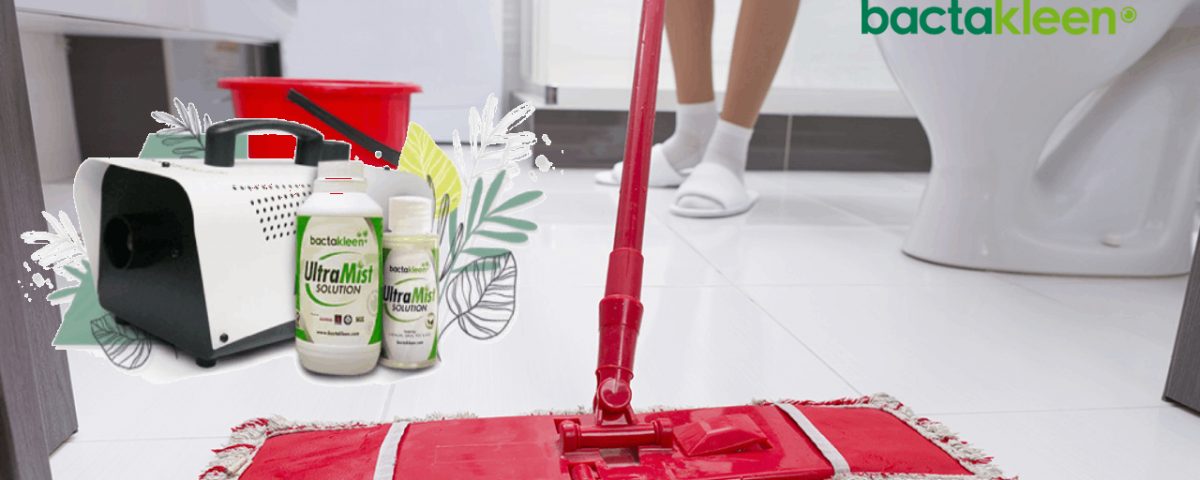- World's No.1 selling Anti Bacterial Treatment System!
- +971 56 3304466
- +971 55 9676070
- info@bactakleen.ae
What Is the Difference Between Disinfection and Sterilization?

Why is 70% Alcohol Better Than 95%?
December 23, 2020
Why is Cleaning Important Before Sanitization?
January 3, 2021According to the CDC, cleaning remains the primary way to stay hygienic always and control diseases and pests from spreading. Imagine your kitchen is dirty; how can you determine what to disinfect or sanitize for your space?
Of course, disinfection and sterilization denote the two primary techniques of inhibiting or killing microorganisms’ growth. Unfortunately, microbes cause various human and animal diseases and so very responsible for food spoilage.
Consequently, there is so much benefit to a complete eradication since it minimizes the severe effects. While both sterilization or disinfection makes this achievable, such processes follow different principles. Here is a detailed exploration of the difference between disinfection and sterilization.
Actual Difference between Disinfection vs. Sterilization
Before understanding the processes, it is important to know what the terms signify and why both should not be used interchangeably. The WHO defines disinfection to encompass destroying pathogenic microorganisms and removing most of the organisms present on surfaces to avoid passing on or spreading infections.
On the other hand, sterilization involves killing and handling all microbial agents, including viruses, bacteria, and fungi present on surfaces. Jing (2020) stated that the sterilization process kills microorganisms plus their spores to uphold the environment’s sterility. This technique works via combinations of high pressure, heat, irradiation, or filtration.
When do you need disinfection or sterilization?
Disinfecting agents are available in different forms, such as liquids, sprays, granules, or powders. The products are ideal for daily life and regularly used surfaces or spaces. The areas well-served are especially those encountering kids or food, including the kitchen, playrooms, dining area, and office desks.
In this case, the harmful microbes should be reduced to negligible levels. Menegueti et al. (2019) mentioned that the most recommended techniques you can use regarding disinfectants contain hydrogen peroxide, phenol, or chlorine bleach. The method serves well where adequate cleanliness is required
If you are looking to sterilize, the medium should be free entirely from microbes to achieve extreme cleanliness. However, the process eradicates vegetative cells through a combination of irradiation, chemicals, high pressure or heat application, and filtration. Primarily, this can be done when the home has the elderly or requires healthcare. Additionally, sterilization rids surface microbes entirely and is suitable for use on nail clippers, syringes, and pedicure files.
In conclusion, cleaning frequencies often depend on how you use the available space alongside its external environment. Undoubtedly, some surfaces are dirt and dust magnets. However, cleaning your toilet weekly would suffice because the areas are not high contact zones.
In choosing between disinfection and sterilization, the CDC recommends that you always identify and record all your goals to clarify the differences between sterilizing and disinfecting. Of course, both processes’ goals are different, whereby disinfection kills or inactivates detrimental microorganisms. Unfortunately, some microbes are left intact in the areas. Conversely, sterilization purposes of killing all the existing microbes since each decontamination method have unique functional uses.
Suppose you are particularly susceptible to regional viral outbreaks or allergies, making you prone to various infections. In such a case, it is good to sterilize your home using professional services and to follow it up with sanitization as a daily routine. Assessing who can take this specific role in your home to handle the activities and ensure sufficient training, information, and instructions required ar available. Always stay, hygienic!




